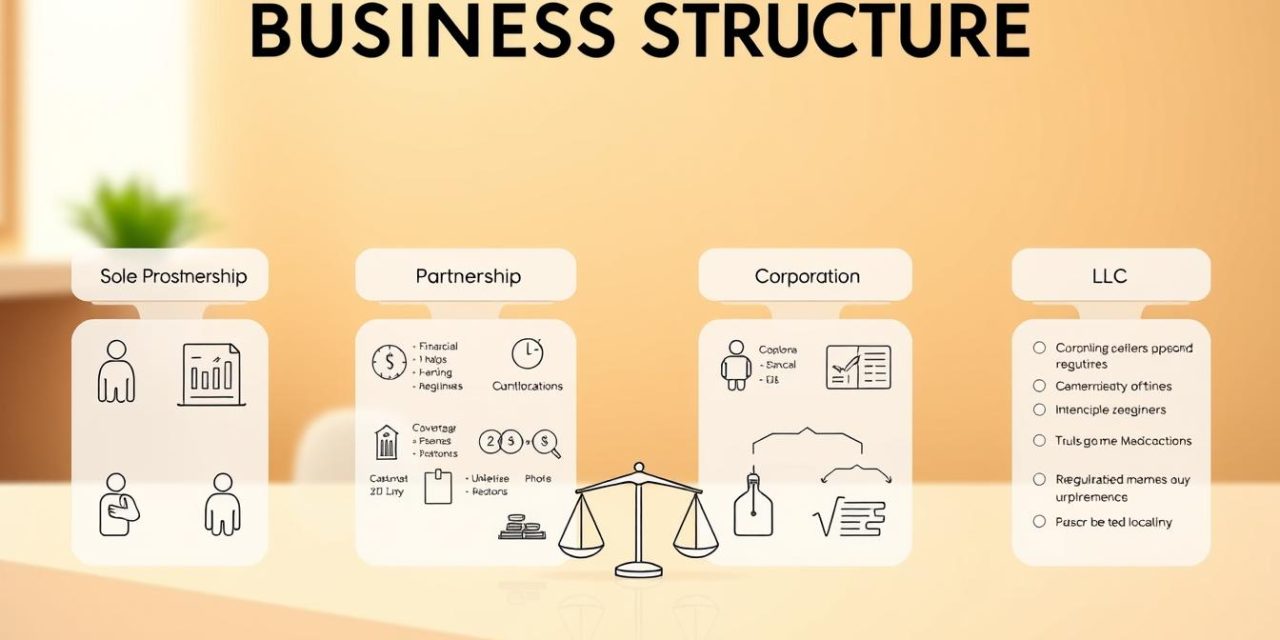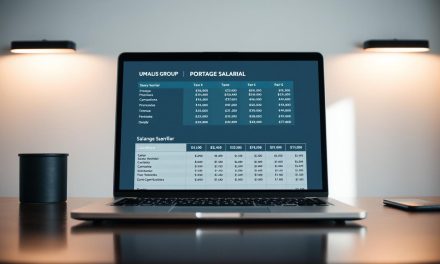What if the most important business decision you make isn’t about your product or market—but about your company’s structure? This foundational choice shapes everything from your liability to your growth potential, yet many entrepreneurs underestimate its long-term impact.
Your company’s framework determines how you protect personal assets, manage taxes, and comply with regulations. In France, selecting the right model isn’t just paperwork—it’s a strategic move that defines your relationship with clients, partners, and financial institutions.
We know this choice feels overwhelming. That’s why we break it down: your structure affects daily operations, financial security, and even how easily you can adapt as your ambitions evolve. Whether you’re launching a solo venture or building a team, aligning your setup with professional goals requires careful thought.
Table of Contents
Key Takeaways
- Your business structure defines personal liability exposure and asset protection
- Tax obligations vary significantly between company models
- Management flexibility impacts partnership opportunities and decision-making
- Credibility with banks and clients ties directly to your chosen framework
- Future growth plans should guide your initial setup decisions
Understanding Legal Status: Core Concepts
Choosing the right framework for your venture in France starts with mastering two fundamental categories: sole proprietorships for individual operators and companies for collaborative projects. This distinction shapes everything from financial protections to administrative requirements.
Individual entrepreneurs typically select structures like:
- Micro-entrepreneur (AE) for simplified operations
- EURL/SASU for limited liability protection
- EIRL for asset separation
Multi-person ventures require formats such as SARL or SAS, which establish distinct organizational identities. As one business consultant notes:
« Your structure choice becomes your financial DNA – it determines how you grow, protect assets, and interact with institutions. »
| Feature | Sole Proprietorships | Companies |
|---|---|---|
| Legal Entity | Linked to owner | Separate existence |
| Liability | Generally unlimited | Limited to investments |
| Social Security | RSI regime | General system |
| Decision Power | Individual control | Shared governance |
The social security system varies dramatically between models. Micro-entrepreneurs pay simplified contributions, while company directors follow general regime rules. Limited liability structures like SARL safeguard personal assets but require formal accounting.
When choosing your professional framework, consider scalability needs and partner dynamics. A SAS offers flexible management terms, whereas SA suits larger ventures needing investor appeal.
Assessing Rights and Obligations in a Legal Framework
Your business setup acts as a financial shield, determining what creditors can claim if challenges arise. Smart entrepreneurs prioritize structures that balance operational freedom with robust safeguards for their private wealth.
Separating Personal and Professional Assets
Structures like SARL and SAS create an iron wall between your private savings and business debts. Your home, family accounts, and personal investments stay untouched even if your company faces lawsuits or bankruptcy.
| Structure | Liability Limit | Asset Protection | Social Security |
|---|---|---|---|
| SARL | Investment amount | Full separation | General system |
| SASU | Capital contributions | Primary residence safe | Mandatory coverage |
| EIRL | Designated assets | Partial shielding | Mixed regimes |
Liability Limitations and Protections
Choosing limited liability models caps your financial risk at what you invest. While this protects your family’s future, remember: banks often require personal guarantees for loans. Our experts help navigate these trade-offs.
The general social security system covers healthcare and retirement for company directors in structures like SAS. Pair this with professional insurance for complete risk management.
Key safeguards include:
- Automatic protection of personal property in SARL/SASU setups
- Notarized declarations to prevent asset seizure
- Clear division of business/personal tax filings
Choosing the Right Legal Status for Your Business

Aligning your business goals with the proper organizational framework requires careful evaluation of operational needs and financial priorities. Your industry’s regulations, growth plans, and risk tolerance all play pivotal roles in this decision.
Key Operational Considerations
Regulated professions like tobacco sales mandate specific frameworks by law. Artisanal ventures often benefit from simplified structures, while tech startups might prefer flexible models attracting investors. As one financial advisor observes:
« Your operational reality shapes your structural needs – treat this choice as your business’s constitutional foundation. »
Solo entrepreneurs face different options than multi-founder teams. Limited liability becomes critical for businesses handling client contracts or physical operations. Consider these contrasts:
| Activity Type | Recommended Structure | Liability Protection | Tax Treatment |
|---|---|---|---|
| Consulting | SASU | Full separation | Corporate tax |
| Retail | SARL | Investment-based | Income tax |
| Freelance | Micro-entrepreneur | Personal risk | Flat-rate tax |
Navigating Fiscal Responsibilities
Your framework determines whether profits face personal income tax or corporate rates. SAS models allow tax optimization through dividend strategies, while sole proprietorships simplify declarations but offer fewer deductions.
We help entrepreneurs balance short-term savings with long-term financial health. For instance, understanding legal frameworks reveals how certain structures protect assets while optimizing social charges.
Three critical tax considerations:
- Corporate tax rates vs personal income brackets
- Social contribution calculations per structure
- Deduction opportunities for business expenses
Navigating Social Security and Tax Systems

Your business’s financial health depends on understanding how social protections and taxation interact. These systems directly impact your take-home earnings and long-term stability, making them critical for sustainable growth.
Understanding Social Security Contributions
Your shareholding percentage determines your classification:
- Assimilated employees in SAS/SASU/SA structures receive employee-style benefits
- Self-employed professionals in SARL/EURL contribute to specialized systems
| Structure | Social System | Contribution Rate |
|---|---|---|
| SAS Manager | General system | ~28% of salary |
| SARL Majority Owner | Sécurité Sociale des Indépendants | Up to 45% of profits |
Recent reforms have streamlined protections for self-employed professionals, aligning benefits closer to employee standards. One tax advisor notes:
« Choosing your contribution system is like selecting insurance – it defines your safety net during career transitions. »
Income Tax vs. Corporate Tax Regimes
Two taxation paths shape your financial strategy:
- Individual taxation applies profits directly to personal income brackets
- Corporate taxation separates business/private finances, taxing dividends separately
Key considerations include:
- Lower corporate tax rates (15-25%) vs progressive income tax (up to 45%)
- Double taxation on dividends under corporate models
- Deduction opportunities for business expenses
We help entrepreneurs model different scenarios to optimize net earnings while maintaining compliance. For example, SAS structures allow strategic salary/dividend combinations to reduce overall tax burdens.
Step-by-Step Guide to Establishing Your Legal Status
Launching your venture often begins with testing ideas as a solo operator before formalizing your structure. France’s streamlined processes now make this transition smoother than ever, especially since regulatory changes reduced barriers for growing businesses.
Registration Process and Legal Formalities
The Sapin II law revolutionized company creation by eliminating mandatory capital audits for solo entrepreneurs transitioning to EURL or SASU structures. This 2016 reform cuts costs and paperwork, letting you focus resources on growth rather than compliance hurdles.
Registration requirements vary by structure:
- Individual businesses: File declaration with URSSAF
- Companies: Notarized statutes and trade register entry
Minimum capital requirements range from symbolic €1 amounts in SASU to €37,000 for SA structures. Sector-specific permits—like alcohol licenses or health certifications—must be secured before operations begin.
Legal and Accounting Considerations
Your business automatically connects to social security systems during registration. Company directors join the general regime, while sole proprietors use tailored contribution schemes. Accounting needs escalate with complexity:
| Structure | Reporting Level | Annual Requirements |
|---|---|---|
| Micro-entrepreneur | Simplified income tracking | Declare turnover |
| SARL/SAS | Full balance sheets | Audit if revenue >€8M |
Ongoing compliance requirements include updating statutes after major changes and filing annual financial statements. We guide clients through these processes to maintain good standing while optimizing income tax positions through strategic salary/dividend mixes.
Comparing Various Legal Structures and Business Forms
Your choice of business framework becomes the invisible architecture supporting every client contract and growth decision. Let’s examine how different models balance operational freedom with financial safeguards.
One-Person Business and Limited Liability Options
Solo entrepreneurs often face a critical trade-off: simplicity versus protection. The EURL combines limited liability with tax flexibility, capping personal risk at your investment amount. You’ll pay income tax on profits but can switch to corporate taxation if advantageous.
For those prioritizing asset separation:
- SASU: Shields personal property while allowing single-person operation
- EIRL: Lets you designate specific business assets for protection
| Structure | Liability | Tax Options | Social Security |
|---|---|---|---|
| EURL | Contribution amount | Income/Corporate tax | Self-employed scheme |
| SASU | Capital limited | Corporate tax | General system |
| Micro-entrepreneur | Unlimited | Flat-rate tax | Simplified regime |
Analyzing Company Formats: SARL, SAS, SA, and More
Multi-owner ventures require structures aligning partner roles with financial goals. SARL suits traditional partnerships with 2-100 associates, while SAS offers governance flexibility for investor-ready businesses.
| Format | Partners | Minimum Capital | Management |
|---|---|---|---|
| SARL | 2-100 | €1 | Majority vote |
| SAS | 1+ | None | Customizable |
| SA | 7+ (public) | €37,000 | Board of directors |
The general social security system covers SAS presidents like employees, providing healthcare and retirement benefits. As one corporate advisor notes:
« Your company’s structure determines whether you’re building a temporary shelter or a permanent foundation. »
Conclusion
Your business’s foundation determines its resilience through market shifts and growth phases. The framework you select becomes your operational compass – guiding financial safeguards, partnership dynamics, and expansion capabilities.
For freelancers exploring structured independence, the freelance model offers adaptable solutions balancing autonomy with professional credibility. Whether opting for simplified setups or protected company formats, each choice carries distinct implications for workflow control and asset security.
We help professionals navigate these crossroads with clarity. Your structure should evolve alongside ambitions – starting lean while preserving options for scaling. Remember: robust frameworks don’t restrict creativity; they create stable platforms for innovation.
Every decision reflects your priorities. Protection versus flexibility. Immediate savings versus long-term benefits. Our tools and expertise exist to transform complexity into confidence as you build your enterprise’s future.
FAQ
How does my legal structure impact liability protection?
Choosing structures like an LLC (SARL) or SAS limits liability to your company’s assets, shielding personal property from business risks. Sole proprietorships, however, expose personal savings and property to potential claims.
What tax differences exist between corporate and self-employed statuses?
Corporate entities like SA or SAS pay corporate tax on profits, while sole proprietors report business income through personal tax filings. Certain LLCs can opt for income tax treatment if eligible under local regulations.
Are social security contributions mandatory for company directors?
Yes, managing associates in SARLs and SASUs must enroll in the general social security system. Contributions are calculated based on salary or dividends, depending on your role and profit distribution choices.
Can I adjust my company’s capital after registration?
Most structures allow capital adjustments through shareholder votes. For example, SAS companies benefit from flexible capital rules, while SARLs require formal approval from associates representing ≥50% of shares.
How do dividends affect my social security obligations?
Dividends aren’t subject to social security contributions in most cases. However, managing partners in certain LLCs may face contribution requirements if dividends replace salary payments.
What’s the fastest way to register a business with limited liability?
Single-member LLCs (EURL/SASU) offer streamlined registration, often completed within days. You’ll need articles of association, proof of capital deposit, and registration with the trade registry.
Do minority shareholders have veto rights in corporate decisions?
Rights depend on your company’s bylaws. SAS structures allow customized voting rules, while SARL minority holders controlling ≥33.4% shares can block major decisions like capital increases or mergers.
How does the general social security scheme differ for freelancers?
Self-employed professionals under micro-enterprise regimes pay simplified contributions based on turnover, while integrated directors in companies contribute via salary-based calculations with broader coverage.





